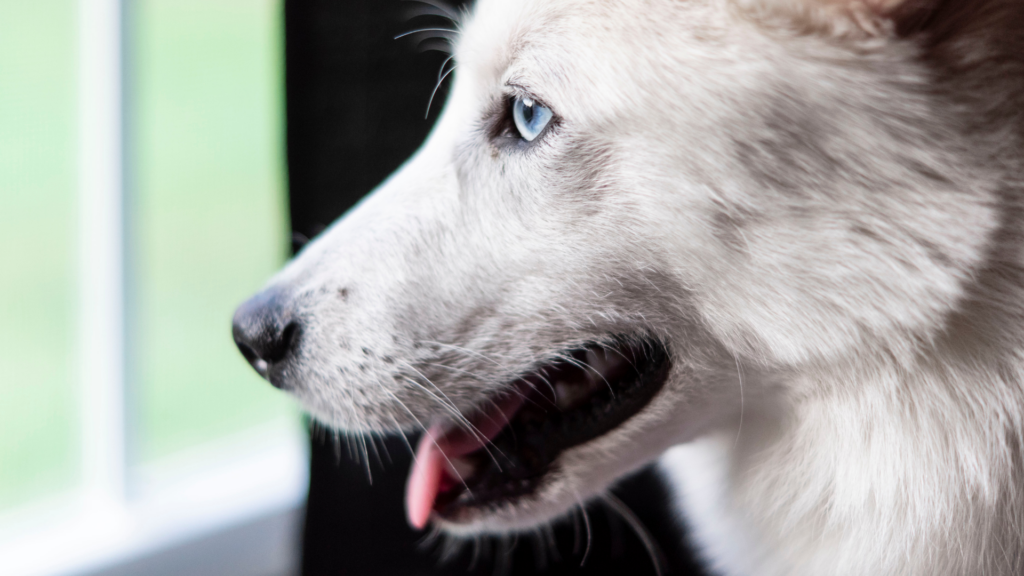Long and gray; short and white – dog’s adorable whiskers come in all colors, shapes, and sizes, proportional to the actual size of your dog. And while these cute, pointy hairs can be found on every mutt’s muzzle, have you ever wondered what their actual purpose is?
Believe it or not, whiskers play an imperative role in how dogs engage with the world. From helping your pup get a better sense of their surroundings, to signaling whether or not to close their eyes for protection, whiskers are a necessary component to your dog’s overall ability to function. How, exactly? Read on as we explain.
What’s in a Whisker?
The hairs we know as “whiskers” that grow on your dog’s snout, above their eyes, and on their chin and cheeks are actually not made of hair at all. Instead, whiskers are made up of a thicker, more rigid material that embeds deep into their skin. And, unlike dog hair, the base of each whisker contains touch-sensitive neurons, where even the slightest touch or pressure can produce a neural response.
As such, while whiskers are technically referred to as vibrissae, a better name for them should really be “feelers,” because vibrissae act as sophisticated “devices” that help your dog feel their way around. Whatsmore, whiskers even act as an early warning detector that an object or person is coming near their face, helping dogs avoid bumping into walls or nearby people or objects.
Which Whiskers Do What?
While all dogs have whiskers, not all whiskers are created equal! Their size and placement each play a different role in your pup’s overall sensory perception:
- Over-Eye Whiskers: When your dog’s eye whiskers detect movement, they send a signal to their brain to close their eyes to avoid threats in the environment (such as walking by a sharp object, like a cactus), and to protect their eyes from wind and harsh air or elements.
- Cheek Whiskers: The whiskers on your dog’s cheeks act as an aid in peripheral perception, especially when navigating tight spaces. They also help your dog avoid bumping into walls and other objects when walking.
- Chin Whiskers: These tiny whiskers grow from a cluster of cells (found in moles on a dog’s chin!) which provide sensory and tactile information which are sent back to your dog’s brain, helping them detect food, water, and objects that are out of their line of vision.
- Muzzle Whiskers: The whiskers growing along your mutt’s muzzle help them determine direction, along with the size, shape, and how near or far an object is from them.
Should I Trim My Dog’s Whiskers?
No – please don’t trim your pup’s whiskers!
Even if they look a bit long, your dog’s whiskers serve an important purpose, and don’t bother dogs physically. In fact, they don’t even know they’re there, much like you don’t ever notice your eyelashes are there!
By removing a dog’s whiskers, you can be causing them unnecessary physical harm, along with stress and anxiety. In fact, when a dog’s whiskers are trimmed or cut off completely, it interferes with their ability to navigate and make sense of their surroundings. In turn, you’ll likely notice them bumping into objects more often and being a bit off-balance, which can make them more susceptible to getting injured.
Finally, it’s worth noting that you should never tug or pull on your dog’s whiskers because of how sensitive they are. But, if you accidentally cut off your dog’s whiskers during grooming, or if they lose a whisker, don’t stress too much. They’ll grow back (although not as quickly as the hair on the rest of their body).


